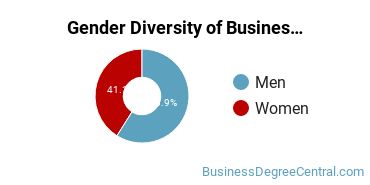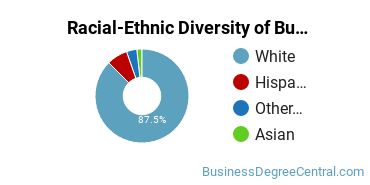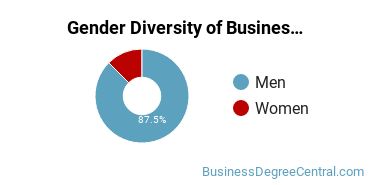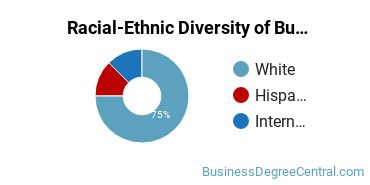Business/Managerial Economics at Weber State University
Every business/managerial economics school has its own distinct culture and strengths. We've pulled together some statistics and other details to help you see how the managerial economics program at Weber State University stacks up to those at other schools.WSU is located in Ogden, Utah and approximately 29,596 students attend the school each year. In 2021, 6 managerial economics majors received their bachelor's degree from WSU.
Want to know more about the career opportunities in this field? Check out the Careers in Business/Managerial Economics section at the bottom of this page.
Featured schools near , edit
WSU Business/Managerial Economics Degrees Available
- Associate’s Degree in Managerial Economics
- Bachelor’s Degree in Managerial Economics
WSU Business/Managerial Economics Rankings
The following rankings from College Factual show how the managerial economics progam at WSU compares to programs at other colleges and universities.
Note: Although rankings can help you see some information about a school, it's not a good idea to depend on them alone. Be sure to check out other things about the school before making your decision to attend.
Bachelor’s Degree Overall Quality & Other Notable Rankings
The managerial economics major at WSU is not ranked on College Factual’s Best Colleges and Universities for Business/Managerial Economics. This could be for a number of reasons, such as not having enough data on the major or school to make an accurate assessment of its quality.
| Ranking Type | Rank |
|---|---|
| 1 | |
| 2 | |
| 2 | |
| 40 | |
| 44 | |
| 138 | |
| 192 |
Managerial Economics Student Demographics at WSU
Take a look at the following statistics related to the make-up of the managerial economics majors at Weber State University.
WSU Business/Managerial Economics Associate’s Program

The majority of those who receive an associate's degree in managerial economics at WSU are white. Around 80% fell into this category, which is below average for this degree.
The following table and chart show the race/ethnicity for students who recently graduated from Weber State University with a associate's in managerial economics.

| Race/Ethnicity | Number of Students |
|---|---|
| Asian | 1 |
| Black or African American | 0 |
| Hispanic or Latino | 9 |
| White | 51 |
| International Students | 2 |
| Other Races/Ethnicities | 1 |
WSU Business/Managerial Economics Bachelor’s Program

About 67% of those who receive a bachelor's degree in managerial economics at WSU are white. This is above average for this degree on the nationwide level.
The following table and chart show the race/ethnicity for students who recently graduated from Weber State University with a bachelor's in managerial economics.

| Race/Ethnicity | Number of Students |
|---|---|
| Asian | 0 |
| Black or African American | 0 |
| Hispanic or Latino | 0 |
| White | 4 |
| International Students | 1 |
| Other Races/Ethnicities | 1 |
WSU also has a doctoral program available in managerial economics. In 2021, 0 student graduated with a doctor's degree in this field.
Concentrations Within Business/Managerial Economics
The following managerial economics concentations are available at Weber State University. The completion numbers here include all graduates who receive any type of degree in this field from Weber State University. Some of these focus areas may not be available for your degree level.
| Concentration | Annual Degrees Awarded |
|---|---|
| Business Economics | 70 |
Related Majors
- Business Support & Assistant Services
- Human Resource Management
- Finance & Financial Management
- Taxation
- Marketing
Careers That Managerial Economics Grads May Go Into
A degree in managerial economics can lead to the following careers. Since job numbers and average salaries can vary by geographic location, we have only included the numbers for UT, the home state for Weber State University.
| Occupation | Jobs in UT | Average Salary in UT |
|---|---|---|
| Survey Researchers | 260 | $53,020 |
| Economics Professors | 160 | $117,380 |
| Economists | 90 | $88,280 |
References
*The racial-ethnic minorities count is calculated by taking the total number of students and subtracting white students, international students, and students whose race/ethnicity was unknown. This number is then divided by the total number of students at the school to obtain the racial-ethnic minorities percentage.
- College Factual
- National Center for Education Statistics
- O*NET Online
- Image Credit: By D.fletcher4 under License
More about our data sources and methodologies.
Featured Schools
You have goals. Southern New Hampshire University can help you get there. Whether you need a bachelor's degree to get into a career or want a master's degree to move up in your current career, SNHU has an online program for you. Find your degree from over 200 online programs.
Visit School
